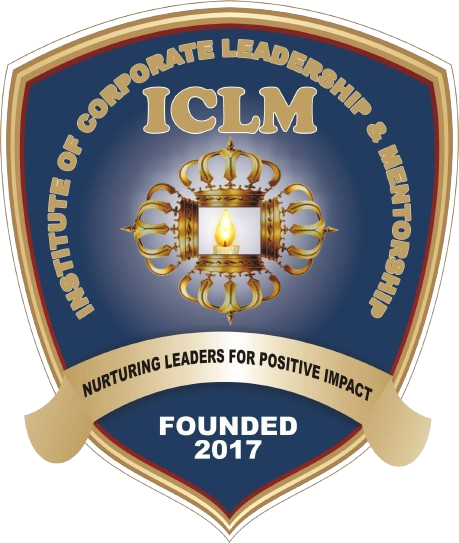By Apostle Emmanuel Eduongo, FCLMI
INTRODUCTION
In today’s world, the word, ‘Change’ has garnered global prominence in every sector, Why? Change is said to be the only thing that is constant. In the world of business, family, politics and economy, change is a major factor that influences its existence.
In leadership, which is the pivot on which every sectoral activity rests, the need for effective leadership as a panacea to today’s fast-paced and ever-changing world has been brought to the front burner, hence the theme of our discourse: Navigating Change:Leadership Agility in Challenging Times. As we all know, change is inevitable, and the ability of leaders to adapt and lead their teams through challenging times is crucial for success.
WHAT IS CHANGE
Change refers to the process of transformation, transition, or modification from one state, condition, or status to another. It can be a natural part of growth, development, and evolution, or a response to external factors. Remember, change is inevitable, and our ability to adapt and navigate it determines our growth and success. Change could be categorized under the following headings:
- Circumstantial changes (e.g., moving, job change, relationship shift)
- Environmental changes (e.g., technological advancements, market shifts)
- Personal changes (e.g., learning new skills, changing beliefs or values)
- Organizational changes (e.g., restructuring, cultural transformation)
Change can be:
- Planned or unplanned
- Positive or negative
- Gradual or sudden
- Temporary or permanent
- Internal or external
The concept of change in leadership refers to the ability of leaders to navigate, adapt, and drive transformation in their organizations, teams, and themselves. It involves:
- Adapting to changing circumstances: Responding to shifts in the market, industry, or environment.
- Driving innovation and transformation: Proactively leading change to stay ahead of the competition.
- Managing transition: Guiding teams through significant changes, such as restructuring or cultural shifts.
- Developing a change mindset: Encouraging a culture that embraces change, learns from failure, and continuously improves.
- Building resilience: Developing the ability to withstand and recover from setbacks and challenges.
- Communicating effectively: Clearly articulating the need for change, the vision, and the plan.
- Leading by example: Demonstrating adaptability, flexibility, and a growth mindset.
- Empowering others: Giving teams the autonomy to make decisions and take ownership of change.
- Monitoring progress: Tracking the impact of change and making adjustments as needed.
- Learning from experience: Reflecting on successes and setbacks to improve future change efforts.
LEADERSHIP AGILITY
Leadership agility refers to the ability of a leader to adapt, navigate, and thrive in a rapidly changing environment. Adaptive leadership, a concept introduced by Ronald Heifetz and Marty Linsky, emphasizes the importance of agile, flexible, and proactive leaders in addressing complex challenges. This leadership style is not about having all the answers but empowering teams to adapt, innovate, and thrive amidst constant change.
Since challenging times in every aspect of human endeavor are, it’s obvious we explore some real-life leadership challenges and scenarios to better understand how to be agile while facing uncertainty during the cause of your operation:
- Transitioning to Agile Work Practices: Communicate the rationale, provide training and resources, empower teams, facilitate cross-functional collaboration, support and manage resistance, implement incremental changes, evaluate and adapt, and recognize and celebrate progress.
- Adapting to Technological Disruption: Assess and acknowledge the disruption, encourage innovation, invest in learning, facilitate change management, and monitor progress.
- Be flexible and adaptable in Decision-Making: Communicate transparently, make strategic decisions, empower and support employees, foster resilience, and continually assess and adapt.
So, leadership agility requires a combination of skills, including vision, communication, empathy, adaptability, and strategic thinking. It enables organizations to stay relevant, innovative, and competitive in a rapidly changing world.
STRATEGIES FOR NAVIGATING CHANGE IN CHALLENGING TIMES
To navigate change in challenging times require resilient leadership, which is not about avoiding challenges but embracing them as opportunities for growth and transformation. Resilient leaders:
- Embrace a growth mindset: Believe that your abilities and intelligence can be developed through hard work, dedication, and persistence.
- Foster emotional intelligence: self-awareness, empathy, and effective communication to manage your emotions and relationships.
- Encourage collaboration and communication: Work with people and not against them, while duly informing them of the state of affairs in the organization.
- Focus on what you can Control: Concentrate on the things within your power and influence, rather than worrying about external circumstances.
- Learn from setbacks: Build your ability to bounce back from setbacks, learn from failures, and adapt to adversity.
- Lead with Purpose and Vision: Connect with your values, purpose, and long-term goals to guide your decisions and actions.
- Maintain a Positive Outlook: Cultivate optimism, hope, and a positive attitude to navigate challenging situations.
- Build a Support Network: Surround yourself with people who encourage, support, and guide you through difficult times.
- Practice Self-Care: Take care of your physical, emotional, and mental well-being to maintain your energy and resilience.
- Stay Curious and Open to Learning: Embrace lifelong learning, seek new knowledge, and stay up-to-date with industry trends and developments.
KEY BEHAVIORS OF LEADERS WHO EMBRACE CHANGE
Successful change-agile leaders at all levels in the organization respond to changes in the business environment by seizing opportunities, including throwing out old models and developing new ways of doing business. They include:
- Share a compelling, clear purpose with employees
- Look ahead and see new opportunities
- Create a safe psychological space for teams to discuss challenges
- Promote calculated risk-taking and experimentation
- Encourage cross-boundary collaborations
CONCLUSION
Navigating change in challenging times requires a combination of skills, mindset, and practices. It’s about Reinhold Niebuhr’s prayer, “God grant me the serenity to accept the things I cannot change, the courage to change the things I can, and the wisdom to know the difference.” When you adopt this principle, and followed it up by developing the needed skills and mindset, you’ll become more confident and focus with a renewed strength to excel and stay afloat when others are sinking
Therefore, navigating change with leadership agility is crucial in today’s dynamic and unpredictable world. By understanding the importance of adaptive leadership, learning from real-life scenarios, and embracing the key behaviors of resilient leaders, we can develop the skills necessary to lead our teams through challenging times and emerge stronger on the other side.
Thank you.
REFERENCES:
Harvard Business Review – 5 Behaviors of Leaders Who Embrace Change
Harvard Business Review – 6 Strategies for Leading Through Uncertainty
McKinsey & Company – How to lead during uncertain times
Resilient Leadership: Navigating Change and Uncertainty with Strength
SmartBrief – Navigating change: The essence of adaptive leadership
BEING A PAPER PRESENTED DURING THE 2024 ICLM EXECUTIVE LEADERSHIP CONFERENCE/INVESTITURE ON JULY 17, 2024 AT UYO – AKWA IBOM STATE

